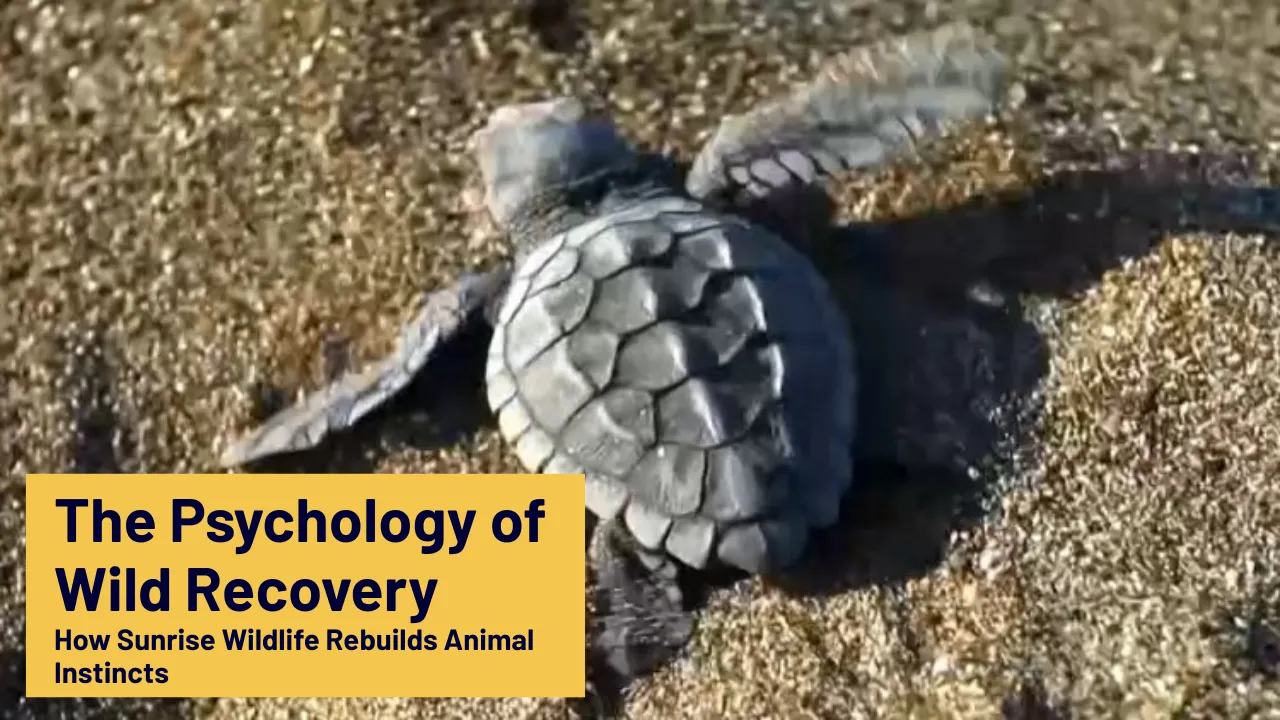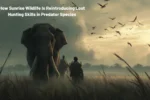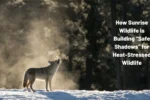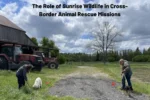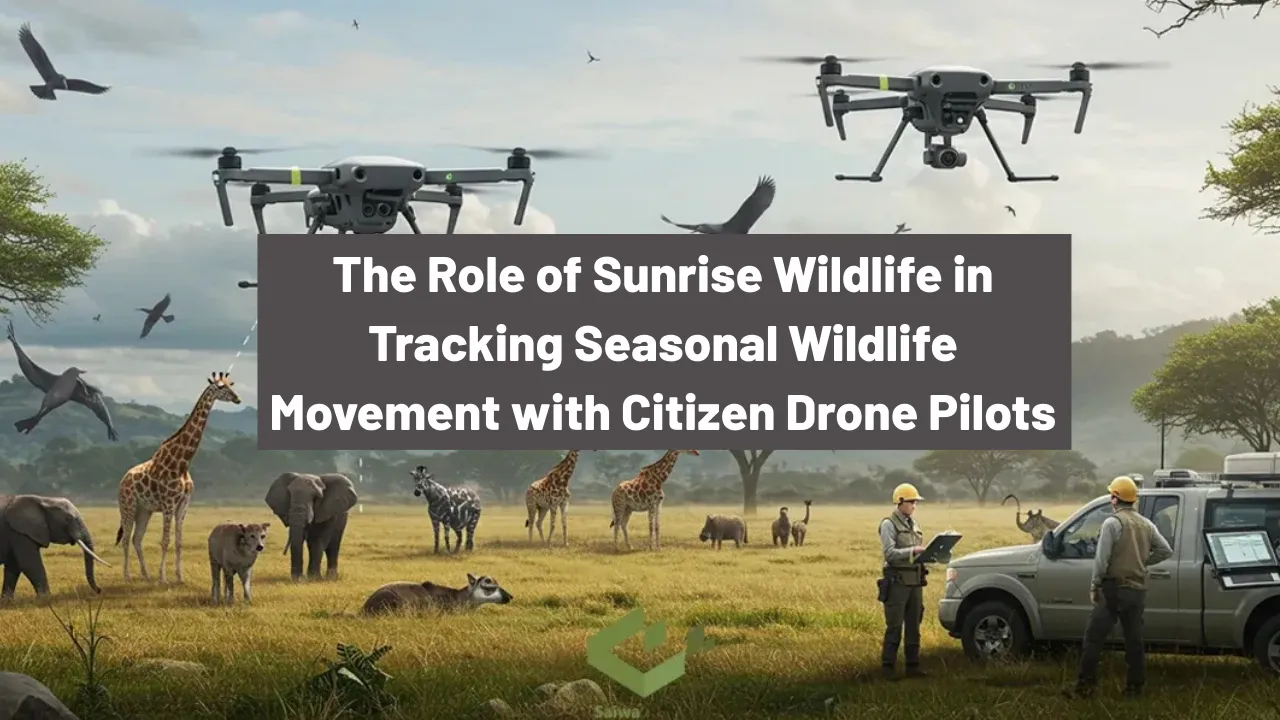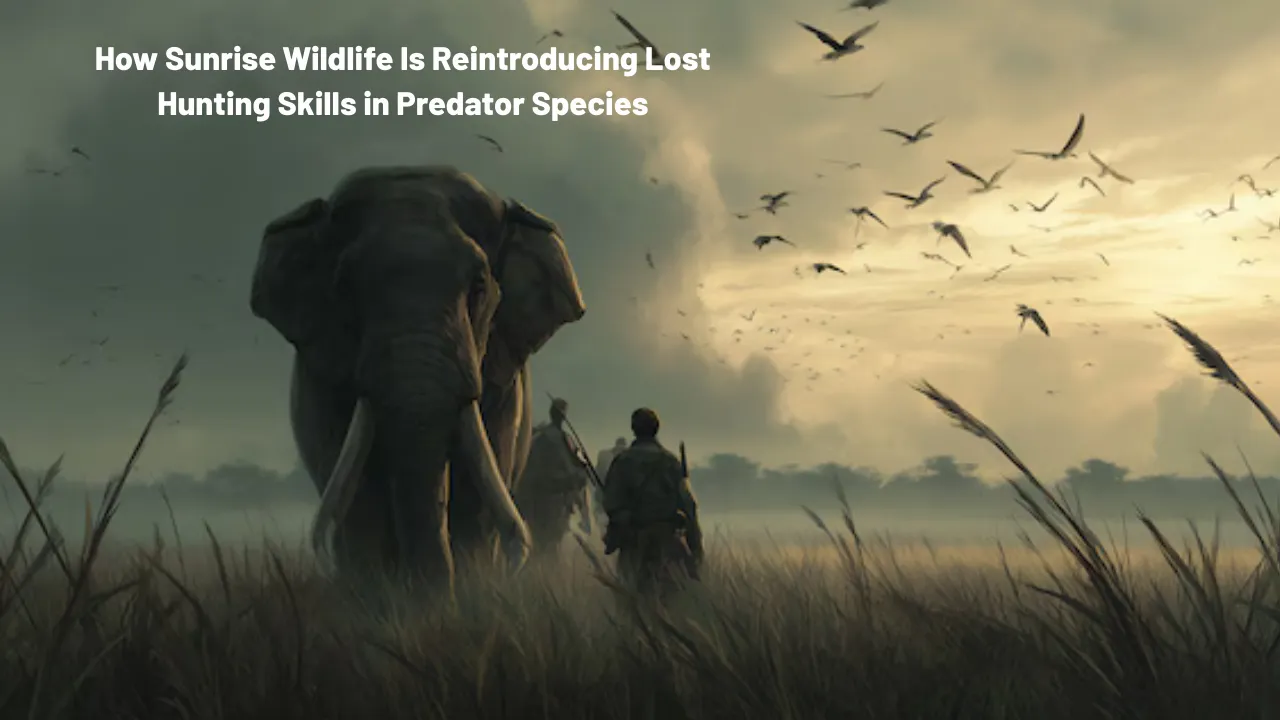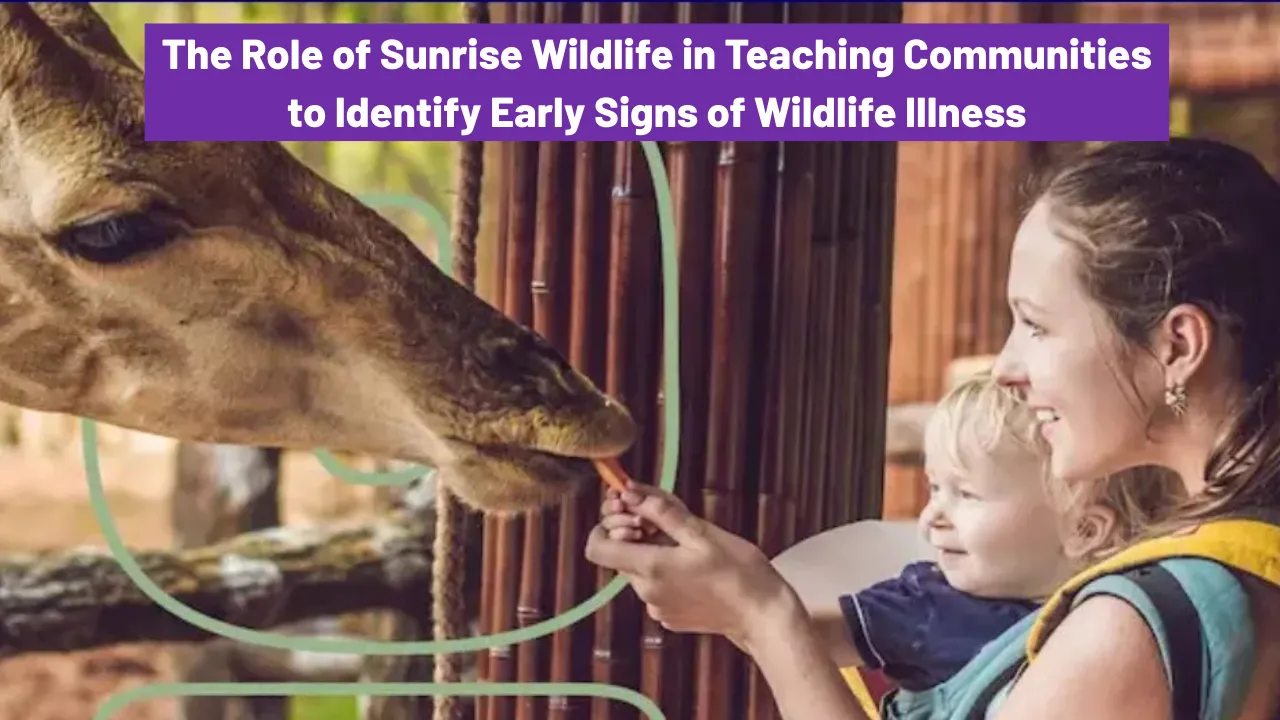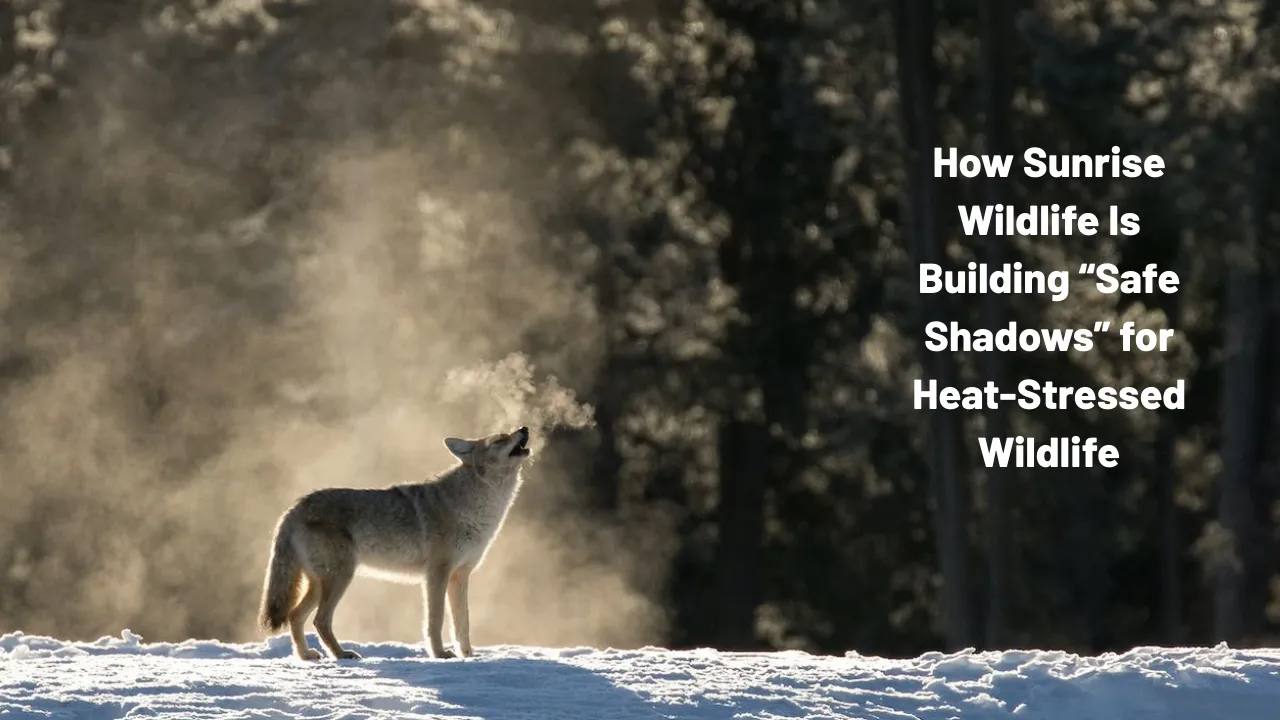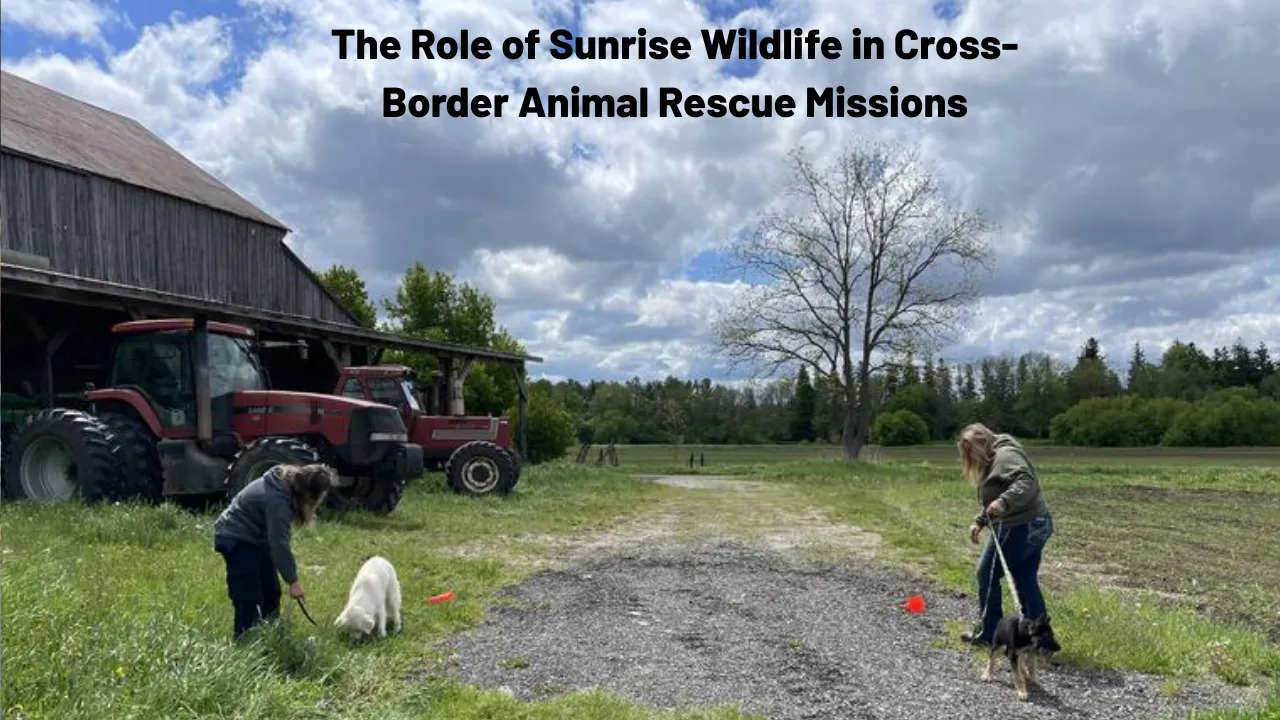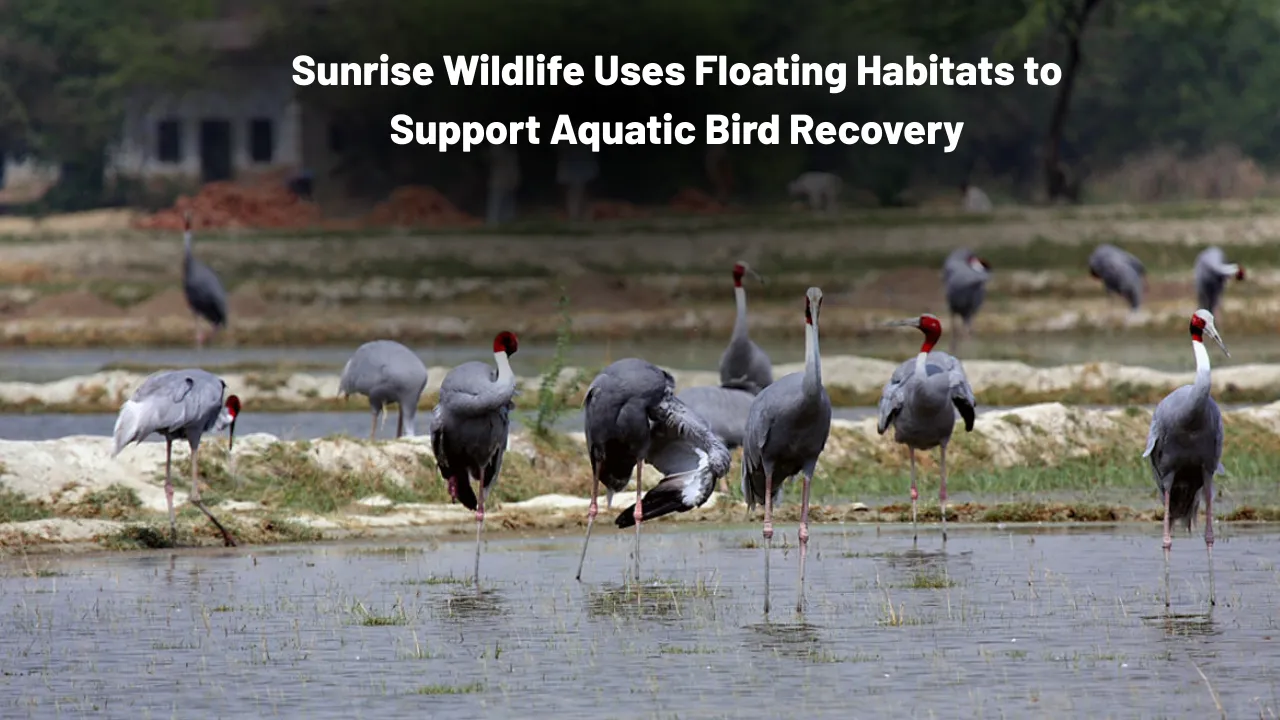The Psychology of Wild Recovery: Wild recovery is an intricate and deeply psychological process. When animals are rescued from the brink—whether from injury, abuse, or captivity—they often lose more than just physical health. Their instincts become dulled, survival skills erode, and fear replaces trust. These creatures, once attuned to the rhythms of the wild, can struggle to find their place back in it. The road to recovery isn’t just about healing bodies but awakening minds.
This article dives into the multi-layered process of wild recovery, with a focus on the groundbreaking work done by Sunrise Wildlife. It explores how behavioral science, emotional support, and environment simulation help animals recover their natural instincts. From regaining hunting skills to rebuilding social connections, this article unpacks the psychology that drives real rehabilitation.
Wild Recovery: Rebuilding Instincts through Mind and Environment
Wild recovery is the process of restoring an animal’s natural behaviors after trauma, captivity, or injury has stripped them of their instincts. At centers like Sunrise Wildlife, recovery is rooted in both psychological conditioning and environmental realism. Animals are gently reintroduced to behaviors they once knew—like foraging, evading threats, and social interaction—through a structured program that mimics their wild habitat. This isn’t just rehab; it’s mental rewilding. The process must consider species-specific needs, past trauma, and current behavior. The goal is not just survival but a confident return to nature, equipped with renewed instincts and autonomy.
| Aspect | Description |
| Core Facility | Sunrise Wildlife Rehabilitation Center |
| Main Approach | Psychological behavior reconditioning and instinct training |
| Targeted Behaviors | Hunting, hiding, social interaction, territorial awareness |
| Duration | Varies by species and condition—weeks to several months |
| End Goal | Full independence and re-integration into native habitat |
Understanding Wild Recovery
At its heart, wild recovery is about far more than medical care. While treating wounds and illnesses is essential, it’s the mental and behavioral renewal that often determines an animal’s survival after release. Wild animals rely on centuries of hardwired instincts. But when they’re pulled from their natural environments—whether due to injury, abandonment, or illegal captivity—these instincts can become inactive or completely lost.
Animals in rehabilitation often face confusion, stress, and even depression. Without behavioral cues from their environment or species, they lose their sense of identity. That’s why wildlife rehabilitation programs like those at Sunrise Wildlife place such strong emphasis on behavioral recovery. These programs are designed not just to reintroduce skills, but to restore confidence, routine, and purpose.
The Role of Psychology in Animal Healing
Rehabilitation professionals have long recognized the influence of animal psychology in successful recovery. Just like humans, animals form emotional responses to trauma. Stress hormones, fear memories, and social withdrawal can prevent natural behaviors from returning. Through patient observation and structured interaction, behaviorists work to recondition these animals.
At Sunrise Wildlife, mental healing begins with trust. Caregivers limit human interaction to avoid dependency but create safe environments where the animals feel secure enough to explore. Hidden feeding strategies trigger problem-solving and stimulate hunting skills. Social animals are paired with others of their kind in controlled conditions to spark social memory and communication skills. It’s a delicate balance—nurturing, but never taming.
How Sunrise Wildlife Supports Recovery
What sets Sunrise Wildlife apart is its commitment to animal rewilding through science-backed methods. This facility blends ecological knowledge with practical rehabilitation practices. Every animal’s history, injuries, and behavior are carefully recorded and used to shape a personalized recovery path.
The center emphasizes environmental enrichment, like simulating forests, rivers, and hiding spaces. Tools like scent trails, live prey simulations, and strategic feeding locations prompt natural responses. Staff continuously monitor and adapt these setups to encourage growth without creating dependency. Their success isn’t measured by how tame an animal becomes, but by how capable it is of living on its own in the wild again.
Steps in the Wild Recovery Process
Effective wild recovery depends on a carefully staged approach. Here’s how Sunrise Wildlife guides animals back to their instincts:
- Initial Assessment
Each animal is evaluated for trauma, health issues, and behavioral signs of stress. This determines the scope of care needed. - Medical Treatment and Quarantine
To protect both the animal and others, newcomers are kept in a low-stress, isolated space while receiving necessary medical care. - Behavioral Observation
Experts study how the animal eats, reacts to stimuli, and interacts (or avoids) its environment. This informs rewilding strategies. - Instinct Rebuilding Activities
Natural behaviors are slowly reintroduced. This includes encouraging scavenging, simulating predator threats, and rebuilding social roles. - Semi-Wild Conditioning
Animals are transitioned to larger, more naturalistic enclosures where they face realistic challenges while still being observed. - Final Assessment and Release
Once an animal demonstrates full independence and behavioral normalcy, it is carefully released into a suitable, protected habitat.
Animal Instincts that Need Rebuilding
Not all instincts come back easily. Depending on the animal’s past, some natural behaviors need to be entirely retrained. Common examples include:
- Hunting and Foraging: Carnivores and omnivores must learn to find and catch food without assistance.
- Escape and Threat Response: Animals must relearn how to sense and respond to danger, including how to run, freeze, or hide.
- Social Structure Recognition: Herd or pack animals benefit from relearning roles like dominance, submission, or cooperative care.
- Territorial and Navigational Skills: Understanding safe zones, feeding grounds, and migration patterns is key for long-term survival.
List of Key Recovery Techniques Used
- Habitat Enrichment Design
Enclosures are built to reflect the wild, including climbing trees, hiding spots, and hunting zones. - Minimal Human Contact Protocols
Staff avoid unnecessary contact to prevent imprinting and ensure animals retain fear of humans. - Natural Soundscapes and Lighting
Realistic cues like birdsong, rustling leaves, and seasonal lighting cycles maintain biological rhythms. - Reintegration with Species
Animals are gradually introduced to others of their kind to spark natural social behaviors. - Adaptive Release Programs
Some animals are released with remote tracking to monitor success and intervene only if absolutely needed.
Signs of Successful Wild Recovery
An animal ready for release shows more than just physical health. Behavioral indicators are the true signs of success:
- Responds to noise and light appropriately
- Avoids human presence instinctively
- Displays hunting or foraging behaviors
- Engages naturally with other animals
- Navigates terrain confidently
Such signs confirm that the animal has been successfully rewilded and is ready for independence.
FAQs
What does wild recovery involve?
It involves both physical healing and behavioral training to help animals regain survival instincts after trauma or captivity.
Can all rescued animals be released?
No. Some animals may suffer from lasting injuries or behavioral problems that prevent safe release. These often become permanent residents at sanctuaries.
How long does wild recovery take?
It depends on the animal, injury, and trauma level. Some recover in weeks, others need months of careful care.
Why are instincts lost in captivity?
Without natural challenges and social structures, animals become dependent and their behaviors shift toward survival in confinement, not the wild.
What is the role of psychology in wildlife rehab?
Psychology helps identify trauma responses, rebuild natural behavior, and shape environments that support instinctive recovery.
Final Thought
Wild recovery is not a one-size-fits-all solution. It’s a journey rooted in patience, understanding, and deep respect for the animal’s nature. By blending behavioral science with compassionate care, organizations like Sunrise Wildlife make it possible for animals not just to survive but to reclaim their wild spirit. The process is complex, yet the outcome is a living, breathing return to freedom. If this article sparked your interest, share it with fellow wildlife lovers or explore more content about nature healing and animal behavior recovery.
